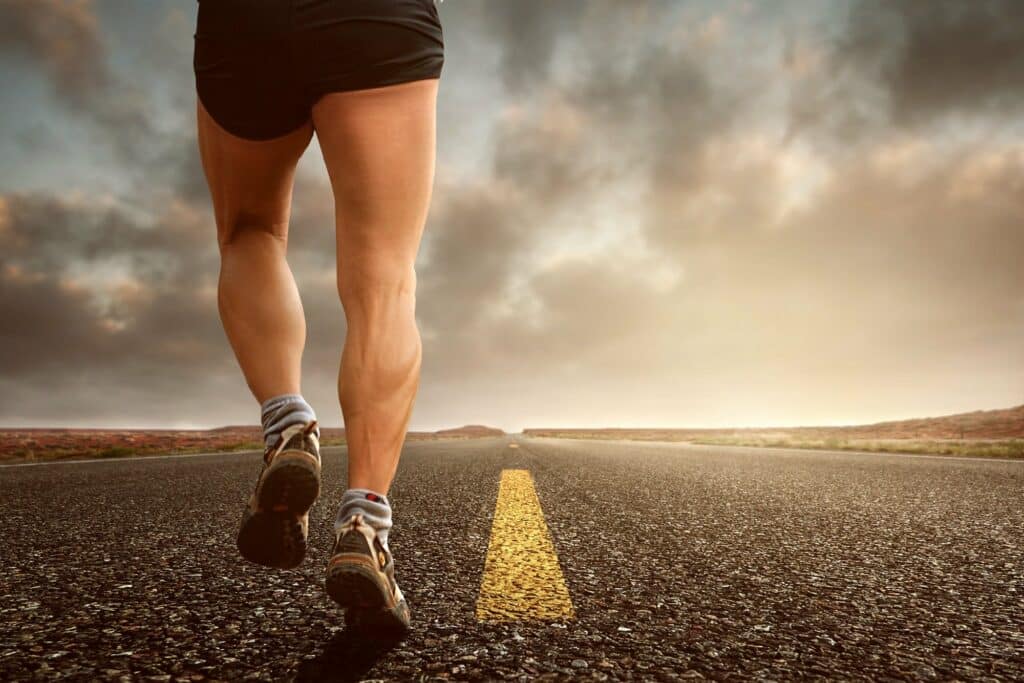Last Updated on April 4, 2024
 High hamstring strains occur in the upper thigh near the buttock. It is technically know as proximal hamstring tendinopathy. High hamstring strains are a common injury for middle to long distance runners and those participating in running and kicking sports.
High hamstring strains occur in the upper thigh near the buttock. It is technically know as proximal hamstring tendinopathy. High hamstring strains are a common injury for middle to long distance runners and those participating in running and kicking sports.
Symptoms of a high hamstring strain
High hamstring strain usually develop gradually overtime. The can occur but as less likely with acute trauma. High hamstring strain symptoms include:
- Deep buttock pain
- Pain in the back of the thigh to the knee
- Pain that worsens with activity
- Pain may be present while sitting
Causes of High Hamstring sTrain
The hamstrings often expereince tendinopathy as they are essential to the decelerating of the straightening knee during activities such as running and hiking. When the knee is thrown forward while running it is the hamstrings job to control and slow the knee to prepare for the next acceleration. When the hamstring is exercised regularly the tendon undergoes a normal strengthening process. Over time the tendon adapts to withstand the load. This strengthening process designed to keep your body exercises and performing. Typically the tendon is capable of repairing itself within 24- 48 hours and is then prepared for more exercise. If too great a load is continually applied to the tendon or if the time allotted for recovery is insufficient then pathological changes will begin occur to the tendon. This results in tendon pain and dysfunction.
Risk Factors
The risk factors for developing high hamstring strain include:
- Previous injury
- Weak Gluteal Muscles
- Anterior pelvic tilt
- Female
- Overweight
- Abdominal or low back weakness
- Loss of hip range of motion
- Increasing training to quickly
- Poor running technique
- Insufficient warm up and recovery
Diagnosis
Correctly diagnosing high hamstring strains can be done by your clinician at Inner Gate Health & Wellness. Both acupuncturists and chiropractor have advanced sports medicine training to correctly assess injuries. Ruling out other problems is key to correct diagnosis. Rarely an MRI is needed to determine if there is bone edema of the ischial tuberosity or significant tearing of the hamstring tendon.
Treatment
The key to treatment is improving good flow and recovery of the tendon. Taking strain off of the tendon will increase its ability to heal.
- Acupuncture: Acupuncture functions to increase blood circulation to the damaged tissue. It is also used to help rebalance associated muscle groups. Correction of hip tilt and quad/ hamstring function is essential for full recovery.
- Chiropractic: Dr. Puckett is well equipped to balance hip, low back and knees in order to improve the mechanical function of the pelvis and recover and restore hamstring health.
- Massage: Our massage therapists work to sooth damaged muscles, improve blood circulation and relieve strain on the hamstring tendon and pelvis.
- Exercise: Exercise is an important component is the recovery from a hamstring strain. Isometric exercises in particular have proven effective at pain relief for athletes suffering from hamstring strains.

Related: Acupuncture vs. Massage
Can Acupuncture Help You Heal?
Many people find relief for their muscle strains through acupuncture. The stimulation from the treatment can help relieve pain and offers anti-inflammatory benefits. If you want to take a more natural approach to healing without the negative side effects of traditional medicine, acupuncture might be the right choice for you.
Searching for relief from a high hamstring strain or other injuries? Learn more about our Portland acupuncture services and schedule an appointment with our certified acupuncturists today!

